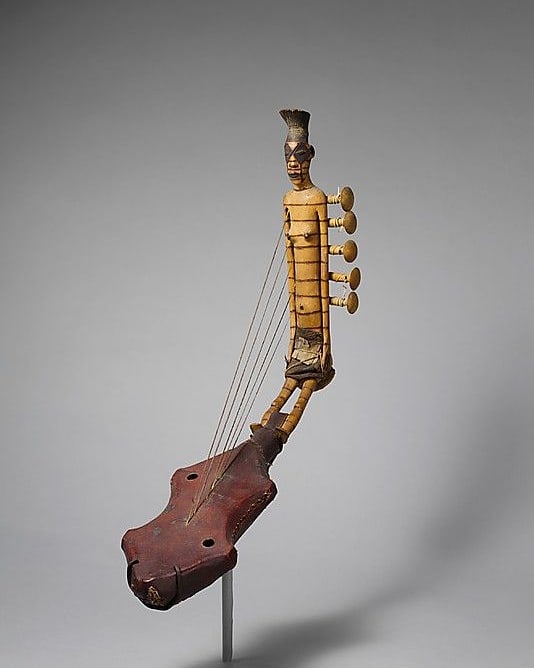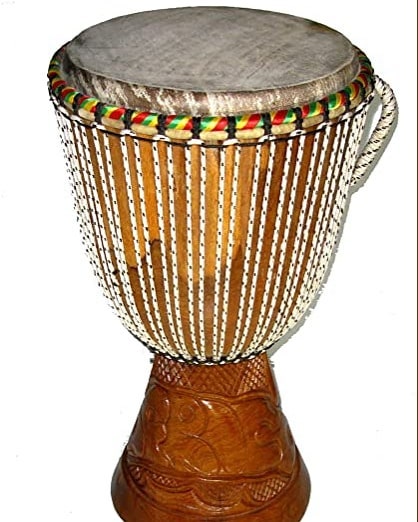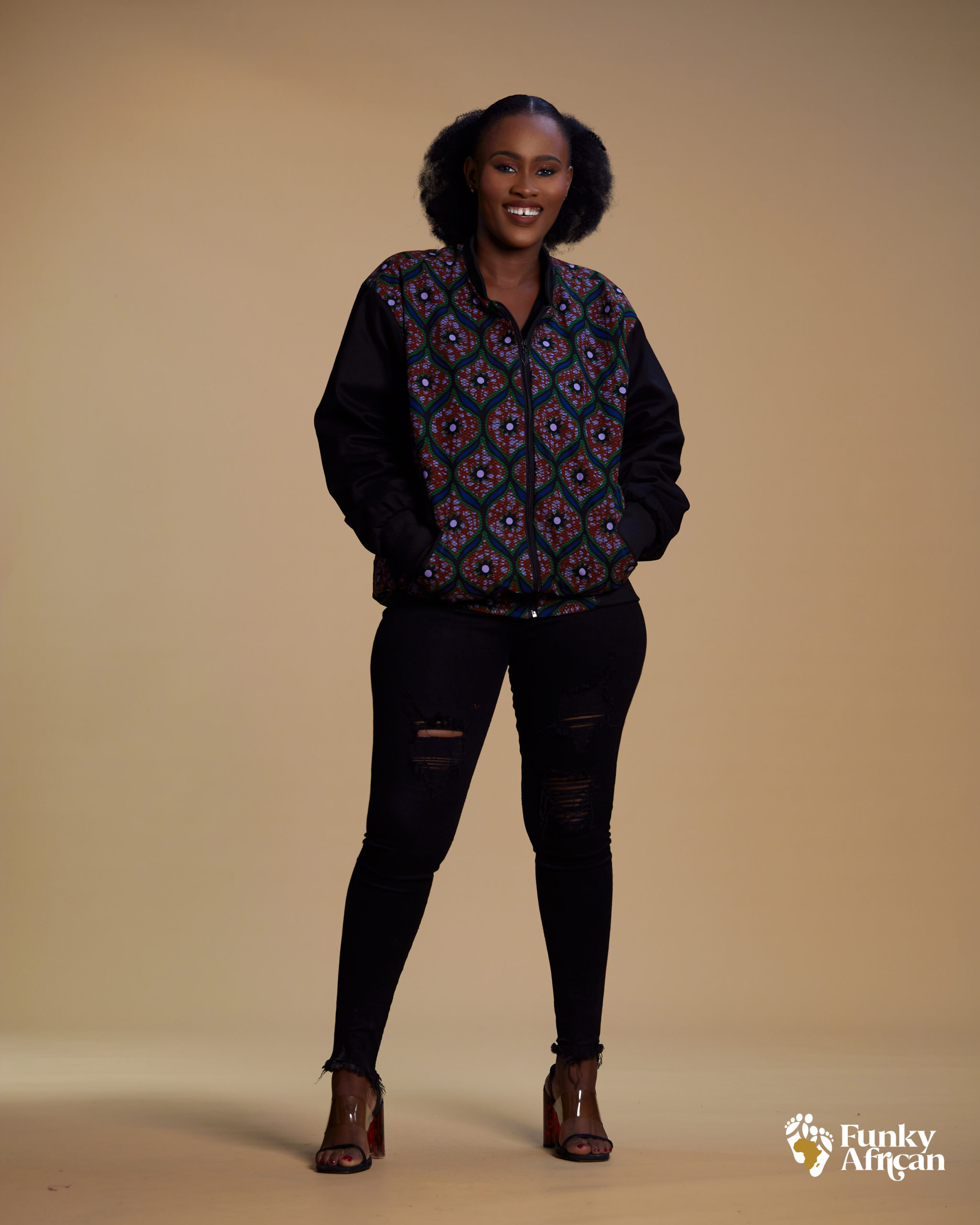The talking drum is an hourglass-shaped drum from West Africa, whose pitch can be regulated to mimic the tone and prosody of human speech. It has two drumheads connected by leather tension cords, which allow the player to change the pitch of the drum by squeezing the cords between their arm and body.
Figurative Harp (Domu) is a musical instrument with freestanding strings that rise in a horizontal plane from its belly to neck, is a harp. The curved neck ends in a finely carved head with partially open mouth, as if in song. The wooden sound box is covered with carefully stitched animal hide.
In West Africa (specifically Mali and the Mande people) have many of these harp/lute type instruments but the most widely known and used is the Kora. Traditional koras have 21 strings, 11 played by the left hand and 10 from the right. This instrument is played upright with the strings facing towards the player.
Stick and trough zithers are positioned horizontally.
A djembe or jembe is a rope-tuned skin-covered goblet drum played with bare hands, originally from West Africa. According to the Bambara people in Mali, the name of the djembe comes from the saying “Anke djé, anke bé” which translates to “everyone gather together in peace” and defines the drum’s purpose. In the Bambara language, “djé” is the verb for “gather” and “bé” translates as “peace.





